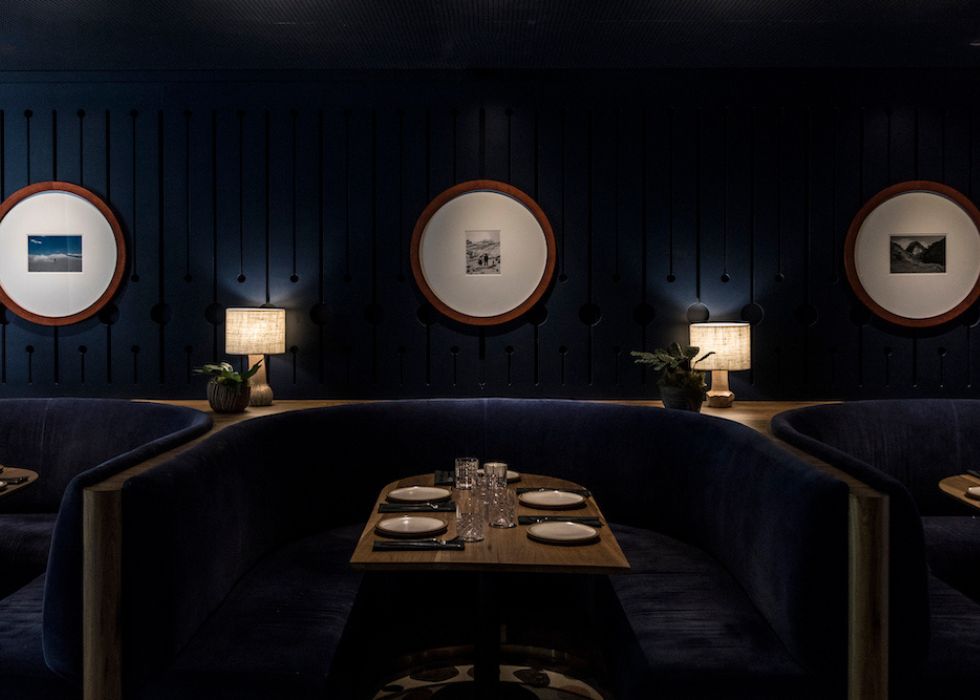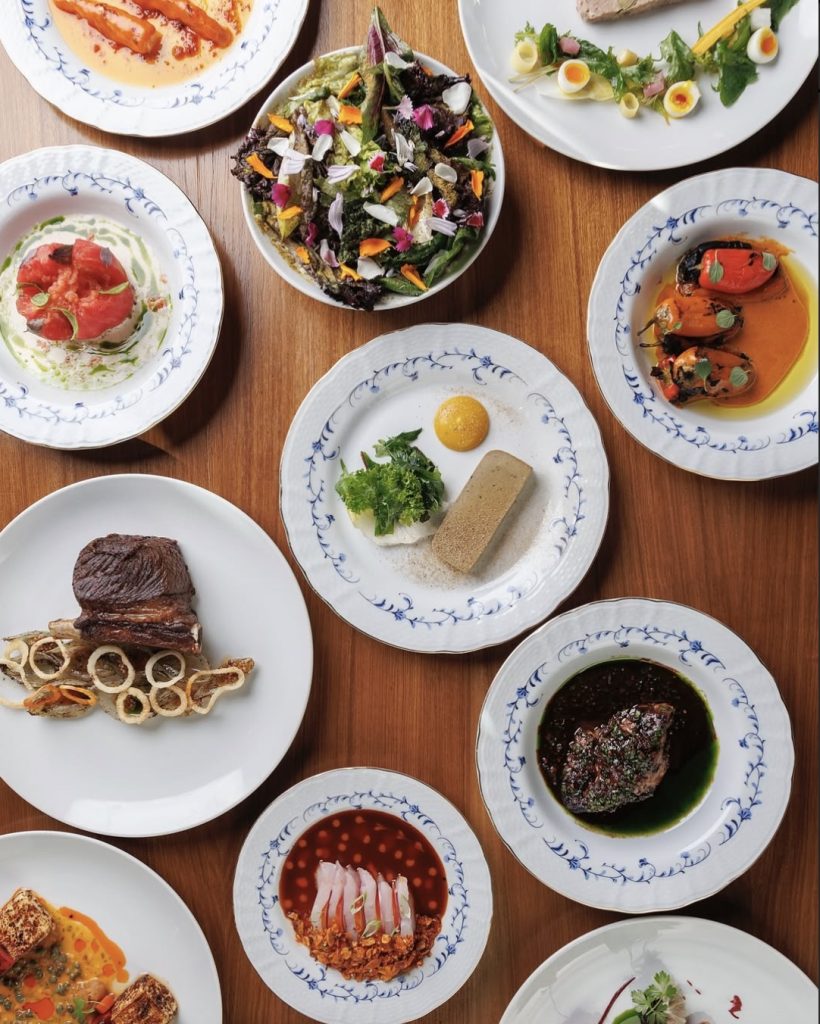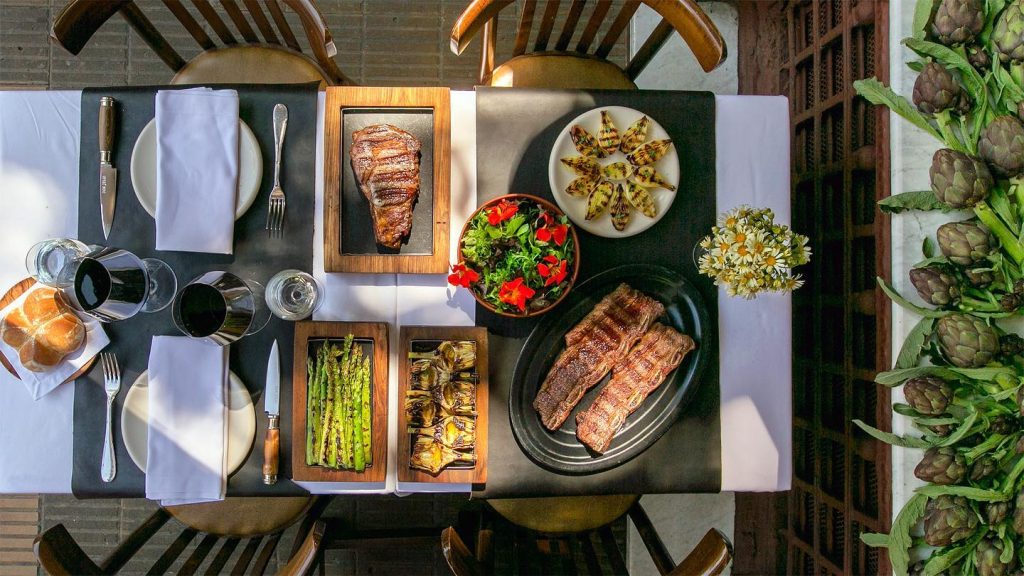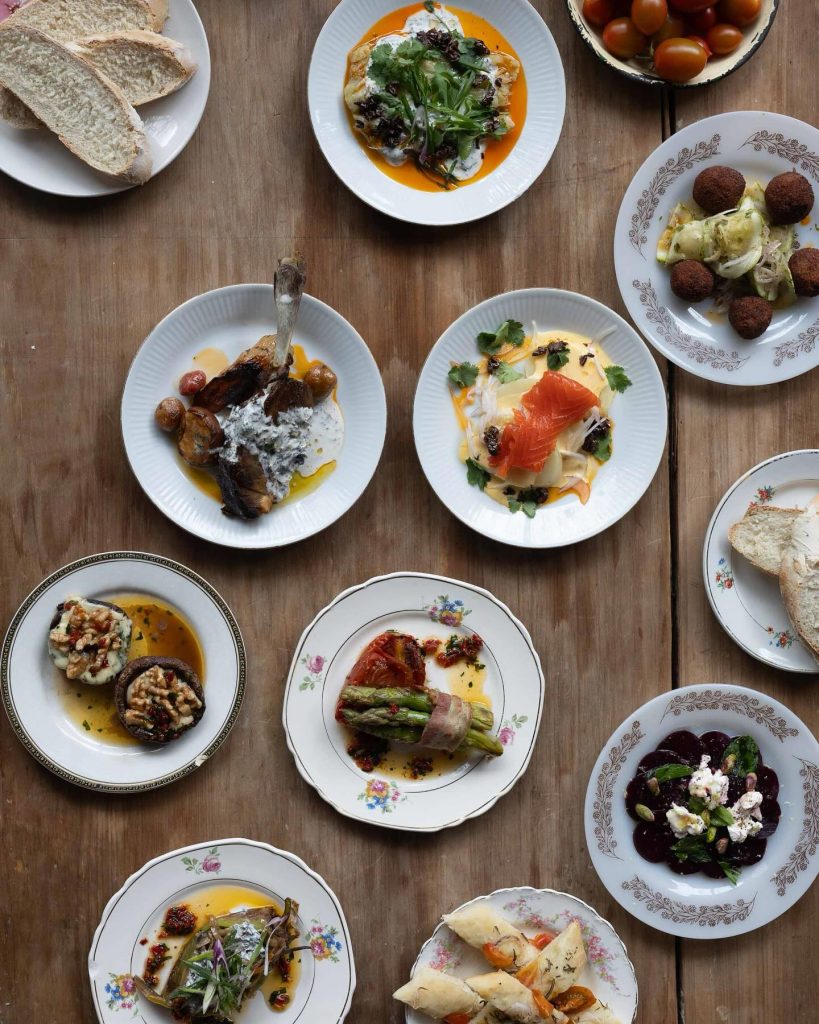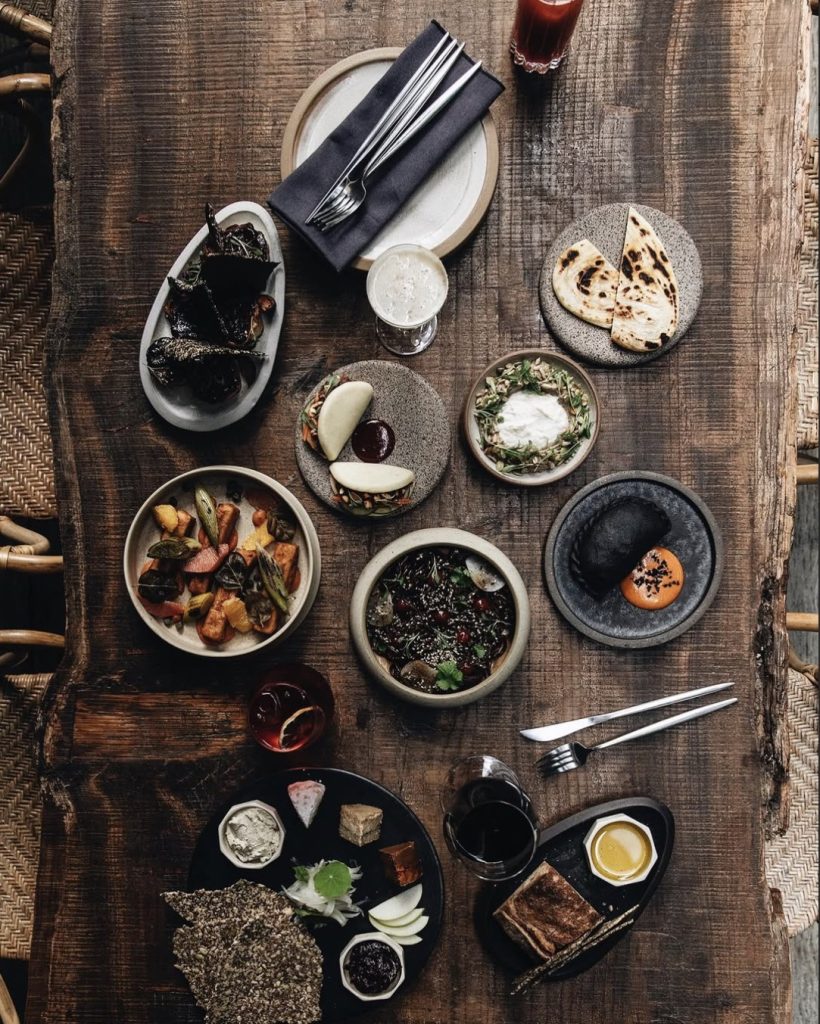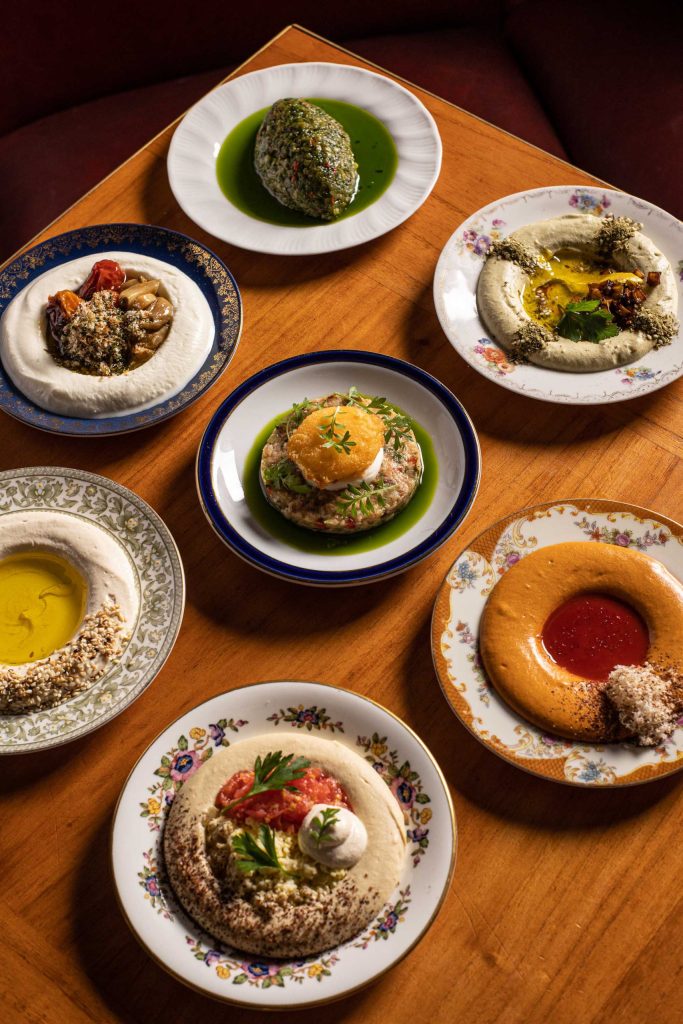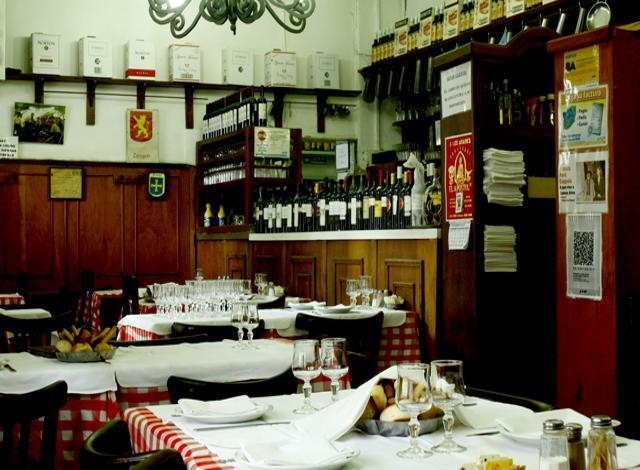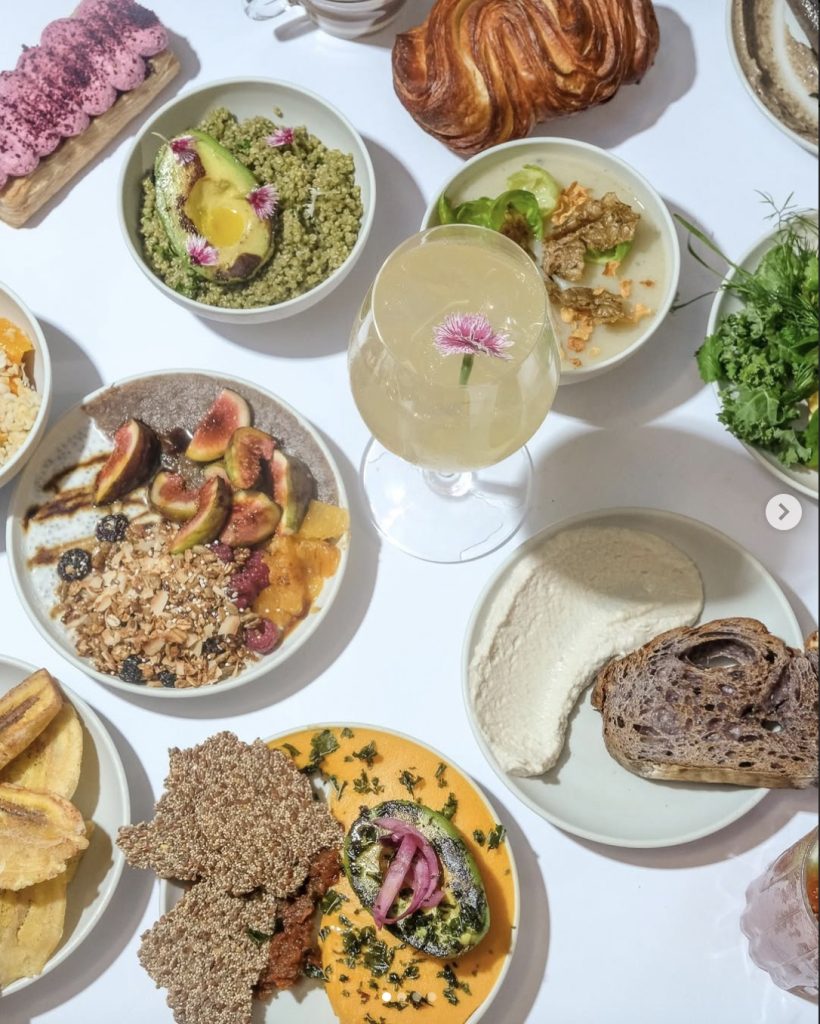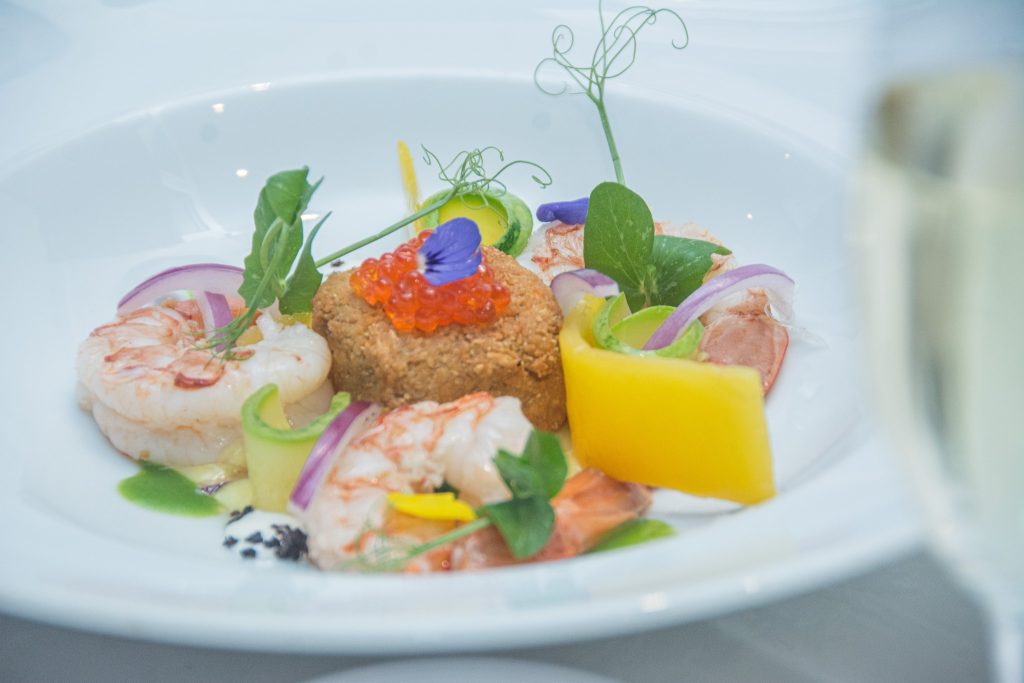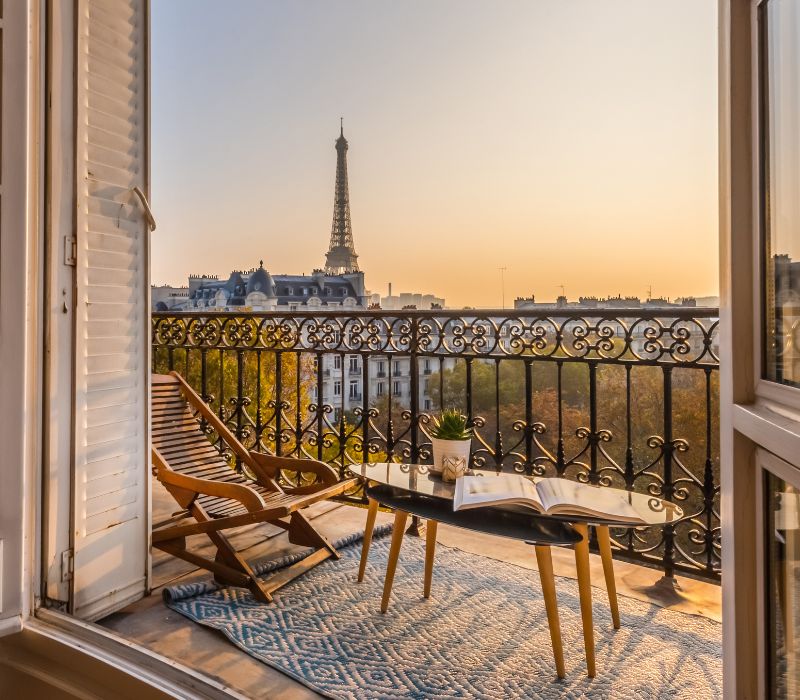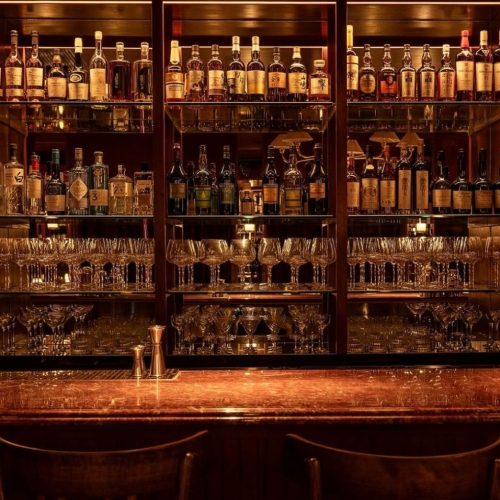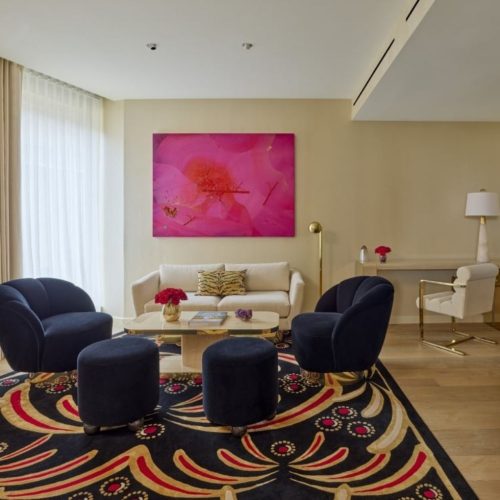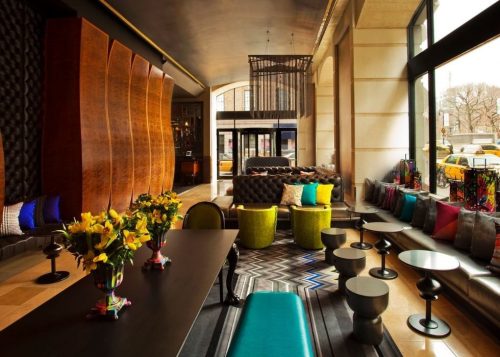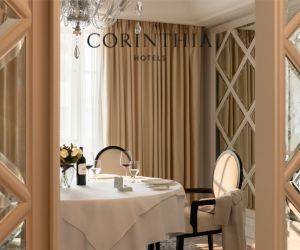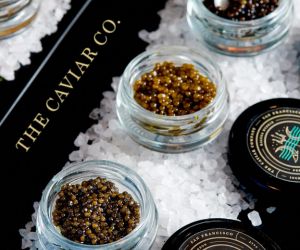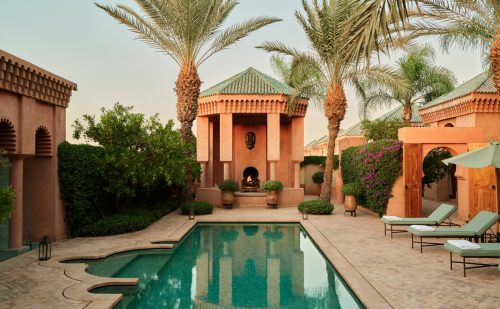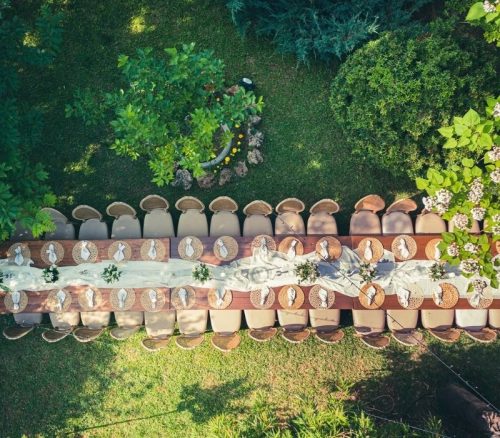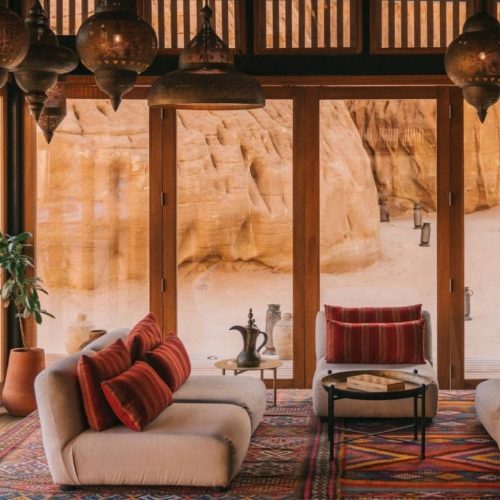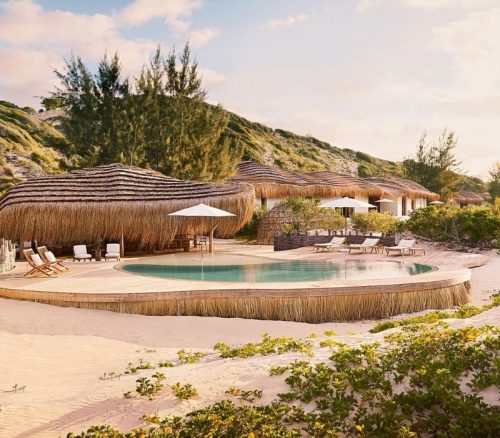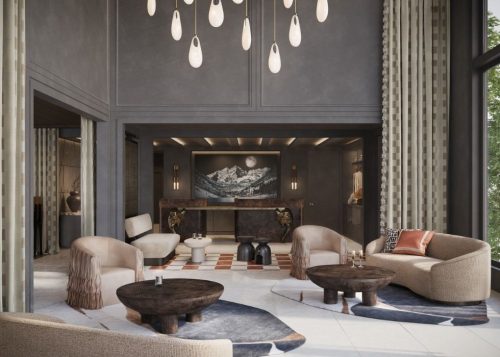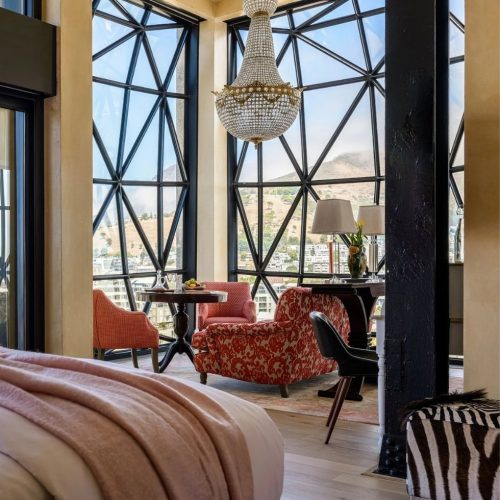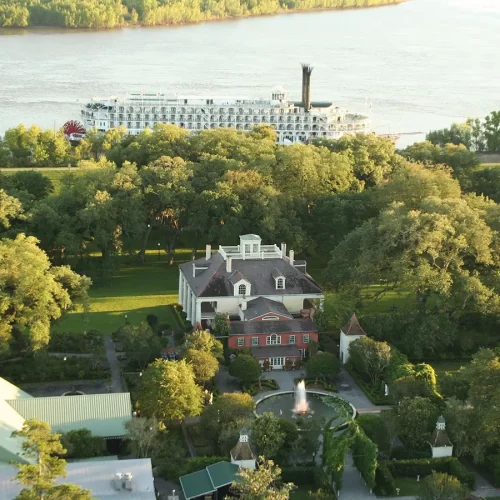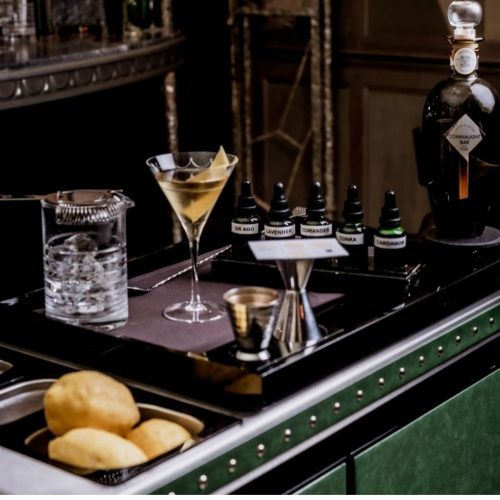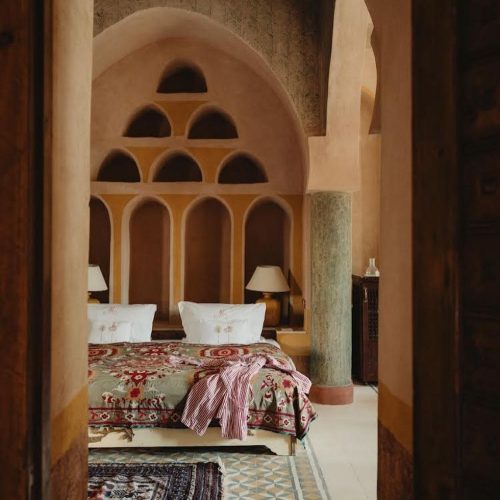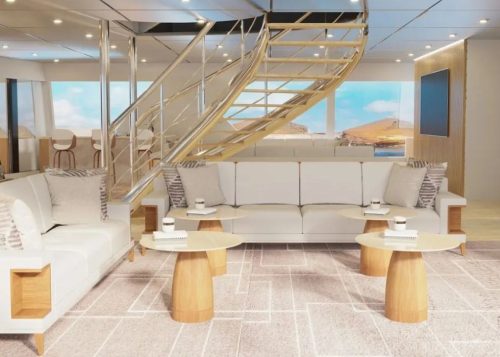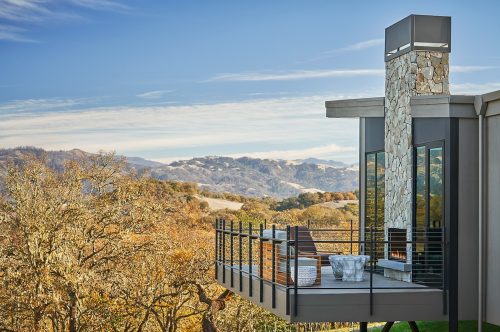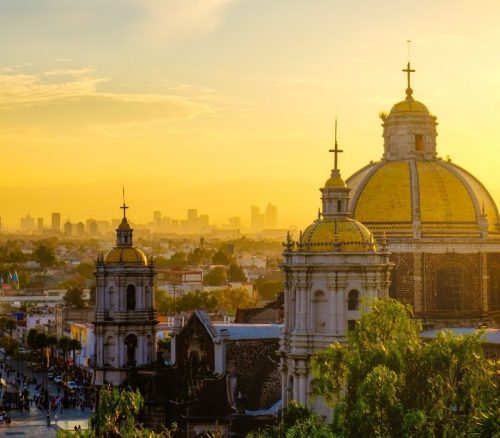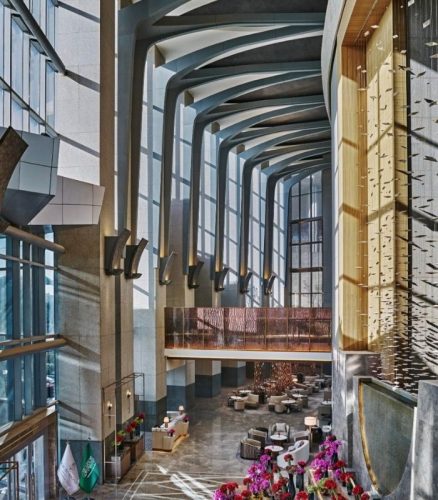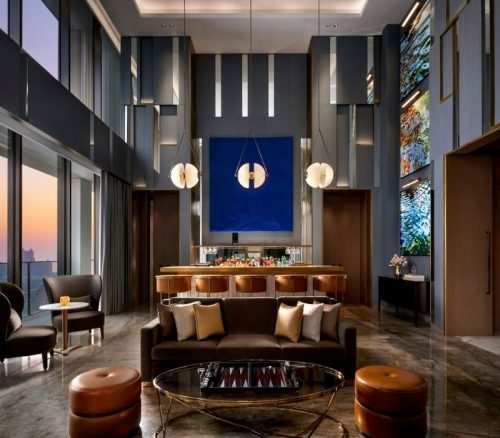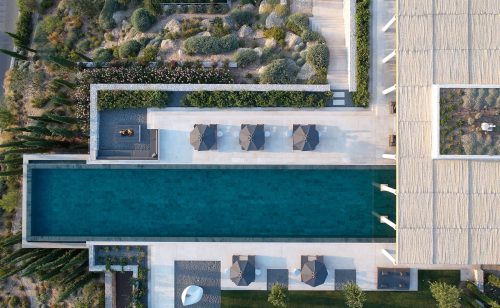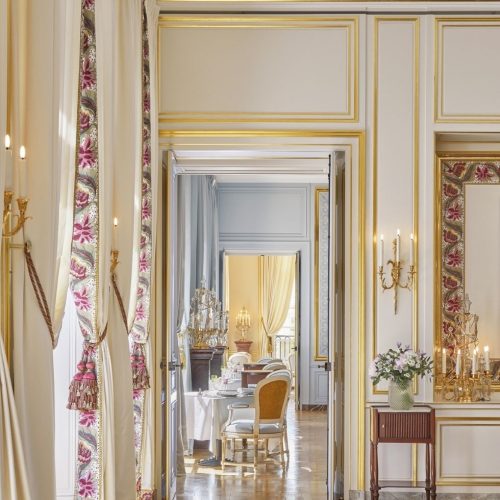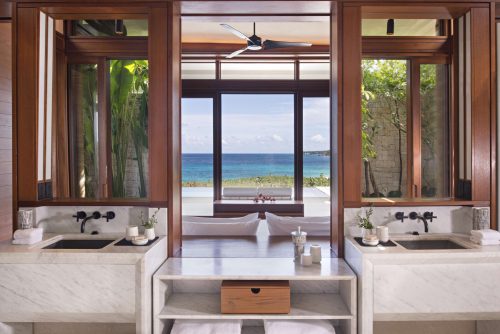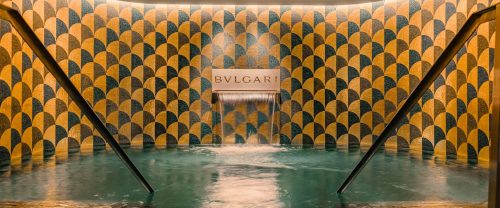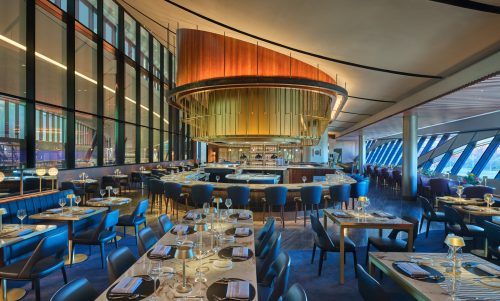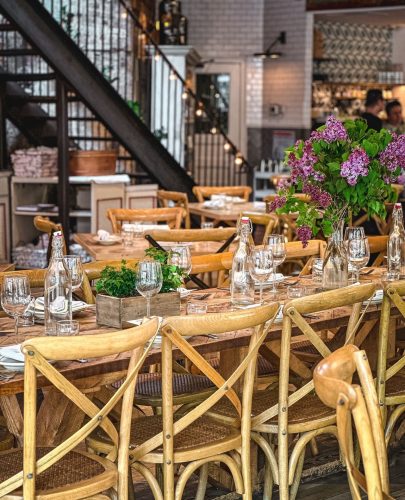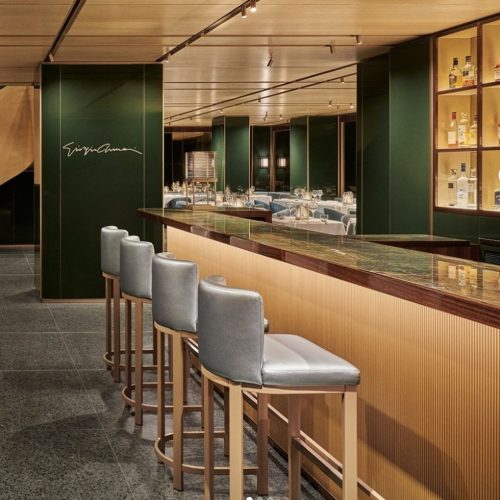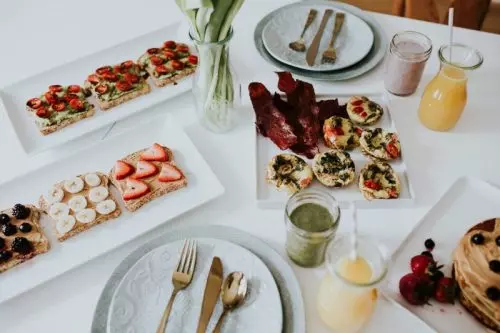We’ll let you in on a little secret: Buenos Aires is always a good idea. Where else can you have a steak that’s life-changing, or a glass of Malbec that can show a Bordeaux a thing or two? The answer is: very few places, and even fewer that have the joie de vivre of Buenos Aires.
The Restaurant: Franca
Franca keeps its menu simple, emphasizing grilled cooking and a sizable cellar of Argentinian wine. Most of its offerings are appetizers, making it easy to share and taste multiple dishes. These include garlic prawns in a bisque aioli, halloumi with burnt watermelon, and charred vegetables. One of the grills is solely dedicated to the vegetables, making Franca an option that satisfies both the carnivores and vegetarians in your group. You can also choose from fifteen wines by the glass and 80+ labels by the bottle. The presentation of the dishes is where Franca’s magic is felt most; artfully crafted plates turn a traditional Argentinian barbecue into a gourmet experience.
The Restaurant: Parrilla Don Julio
Parrilla Don Julio is not an easy reservation. However, they are open every day, and if you wait to be seated (and you most likely will), they make your wait worthwhile. While in line, you’ll receive complimentary sparkling wine, empanadas, and the occasional ceviche, treating the wait more like a meal precursor. The ingredients are grown organically, and all the meat is grass-fed. If you’re looking for a less common cut of meat, you’ll likely find it here (sweetbreads and homemade salami, for instance). The restaurant ranked number nine in The World’s 50 Best Restaurants and offers a wine cellar with thousands of Argentinian labels.
The Restaurant: Restaurante Caseros
Restaurante Caseros is where you go to cure homesickness. The food is homemade, and the friendly staff makes the space warm. They frequently celebrate their regulars and collaborate with friends to create menus outside their main offerings. The space is bright and charming, with large window displays abundant with goodies, like homemade focaccia and other baked goods. Restaurante Caseros was awarded the Bib Gourmand in the Michelin Guide, which signifies high quality for a reasonable price. Some of their dishes include an egg florentine, mushroom risotto, and coconut flan. In other words—pure comfort.
The Restaurant: Sacro
If you’re after a mix of a dimly lit, sultry spot and a bright, plant-filled outdoor space, Sacro offers both. The plot twist is that they have an entirely vegetarian menu. That said, many of their dishes are disguised to look like traditional meat preparations. There’s the bad kind of drama, and then there’s drama as an aesthetic, and Sacro has the latter down. The patio mentioned before is called the Jungle patio, with a mass of tropical plants throughout, and the interiors with luxurious midnight blue velvets. Sacro’s boldness follows through in their plates, like the black (activated charcoal) empanada filled with smoky mushrooms, or their kimchi dumpling with a ginger foam topping. Other creative spins on meat-inspired dishes include a tomato and fig tartare and the ‘Southeast Green Curry made from bamboo, tofu, mango, and coconut milk.
The Restaurant: Mishiguene
While one of the wonders of traveling is eating your way through the country, sometimes too much of the same thing, no matter how good, can get boring. While you’ll undoubtedly enjoy all the Argentinian delicacies, having different cuisines on your roster could be helpful. That’s where Mishiguene comes in, translated from Yiddish as “crazy.” Jewish cuisine is an eclectic mix of dishes from different regions of the world’s Jewish community. This looks something like salads from the Middle East, like Babaganush, pastrami, and gefiltefish, commonly made in European Jewish homes, or the potato vareniki of Russian descent. Tomás Kalika founded Mishiguene and is well-known in Latin America for his food television programs. You’d be mishiguene not to try it.
Restaurant: Lunch at El Preferido de Palermo
A late lunch at El Preferido de Palermo is prime time for a peaceful meal at the busy Argentinian staple. The 70+ year-old restaurant was first a general store that housed a bodegón (tavern). In 2018, the restaurant was at risk of shutting down, but Parrilla Don Julio owner Pablo Rivero bought the place to revive the iconic landmark that so many in the community grew up loving. Because Rivero owns El Preferido de Palermo, he sources his ingredients no differently than Parrilla Don Julio—from his own farm. Many of its dishes are homemade, from the charcuterie to the ice cream. A climate-controlled glass case houses maturing meats like salami, chorizo, sausage, and pony prosciutto (yes, actual pony). The cheeses include buffalo milk mozzarella and double cream camembert, but they’re most known for the Milanesas of sirloin.
The Restaurant: MARTi
For a fine dining experience, MARTi resides in the Recoleta neighborhood of Buenos Aires. Paris-style townhouses and upscale boutiques make the neighborhood optimal for a stroll before or after your meal. As for the restaurant, MARTi is another vegetarian option with an uncustomary layout. From the outside, you’d never know what you were about to step into, and the interior mimics the appearance of a glass greenhouse. But this “greenhouse” is one room, dedicated to an open kitchen and a wraparound counter for seating—not one table in sight. Chef Germán Martitegui is well-known as a judge on MasterChef, so he’s mastered preparing dishes on display. You can expect innovative dishes like a tofu meatball sandwich, Beetroot shawarma, and gazpacho with air bread.
The Restaurant: Lima
Lima is another option if you want to take a break from Argentinian cuisine. Their focus is Japanese and Peruvian fusion (known as Nikkei). The restaurant has three separate locations in different Buenos Aires neighborhoods. Palermo has a modern vibe that matches the neighborhood’s spirit. The dishes are Peruvian, but have contemporary touches that slightly differ from the San Telmo location. Lima in San Telmo has a cozy, more casual feel. Then there’s the location in Puerto Madero, which is the most refined of the three. The crowd is more affluent, and the service is formal. It’s rare to see a menu that serves both omakase and South American desserts like flan and tres leches under the same roof, let alone in Argentina.
The Restaurant: Lunch at ROUX
ROUX also happens to have three dining experiences, but here, they’re all in the same building. There’s the main dining room, the “ROUX Sidewalks,” and a rustic dinner in the wine cellar. Owner Martin Rebaudino has restaurant-eering in his blood, with a grandfather who owned multiple spots. He worked in many renowned restaurants before opening his own, like the three Michelin-starred Berasategui.
The food at ROUX has a variety of French, Spanish, Mediterranean, and Argentinian influences. The restaurant celebrates where your food comes from, sourcing all its products from small producers. You’ll even find the origin of the ingredients of each dish on the menu. So you’ll know that your ham has been aged for two years, was acorn-fed, and comes from Iberia, and that the prawn carpaccio is from Puerto Madryn, specifically the province of Chubut.
FAQs
Q: What is Franca’s address?
A: Franca’s address is Darwin 1111, C1414CUW Cdad. Autónoma de Buenos Aires, Argentina.
Q: Does Mishiguene offer a tasting menu?
A: You can choose from a six-course tasting menu of the six best seasonal dishes, or the tenth-anniversary tasting menu with ten courses of Mishigiene’s best-known dishes.
Q: Does MARTi offer brunch?
A: Yes, MARTi has brunch available on the weekends.
Other Articles You’ll Like
Most Anticipated Hotel Openings Of 2025
Easy Spa Days
Best Tasting Menus In The World

